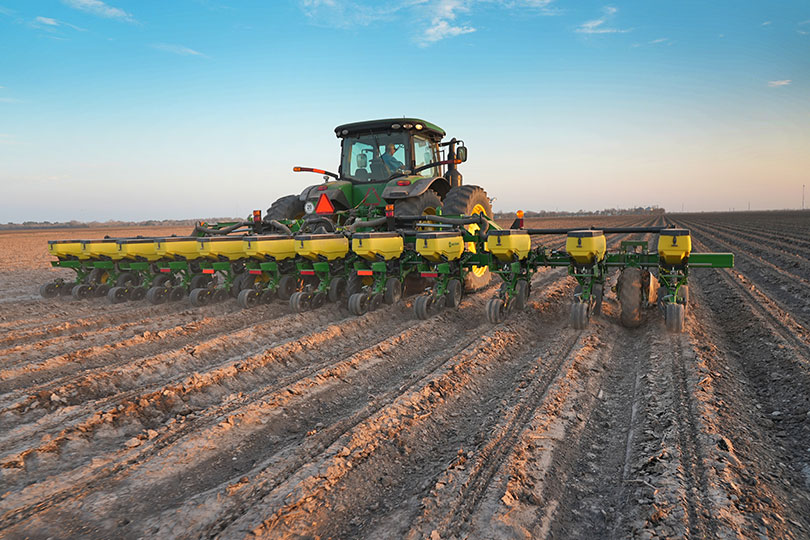By Julie Tomascik
Editor
Planting seeds deep in the soil with some extra faith and hope is where you could find Richard Beyer in late February and early March.
“Seeing the seeds come up—that really gives us the most excitement and hope for the whole year,” he said.
Beyer grows corn, cotton, sorghum and raises cattle with his wife and three daughters in Matagorda County.
The last few years have been challenging with the increased input costs, drought conditions and supply chain issues, but Beyer remains cautiously optimistic for this year’s growing season.
“The hope is that we have a good yield, but there’s so much that we don’t control—whether it’s weather, markets, inflation,” Beyer said. “So, we’re yield dependent when it comes right down to it. We need a big yield to be profitable.”
Corn prices are trending much lower than last year, and for Beyer, that makes it tough.
“When we lose that much on the price of corn, it’s hard to make up because nothing else has gone down. Our inputs haven’t gone down. Seed costs haven’t gone down. Tractor parts sure haven’t gone down,” he said.
Farmers across the country depend on the farm bill, but they need a modernized version that takes into account inflation and increases reference prices. The one-year extension that was granted last year expires in September.
“We can deal with the weather, but we can’t overcome the markets a lot of times,” he said. “Congress and the administration not paying attention to the farm bill and taking care of farmers, that’s a huge mistake.”
Despite the uncertainty of a farm bill, farmers must continue to prepare fields and plan for the next crop.
Planting season for Beyer was delayed slightly by rainfall, but that helped provide much-needed soil moisture.
“We want to have good seed to soil contact,” Beyer said. “We pay a lot of attention to soil moisture. We want that seed to be surrounded by good, moist soil so it can germinate and make a strong seedling.”
Feral hogs like Beyer’s corn plants, too. The swine of mass destruction can wreak havoc on a field in a single night.
They’re one of the most destructive invasive species in Texas and the U.S. today. They cause extensive damage for farmers and ranchers each year.
“They can move in overnight and just root up everything that we had planted that day,” he said. “They typically won’t get 100% of what we planted, but they do a lot of damage. Then, we have to go back in and replant those spots.”
The weather along the Gulf Coast also can be a challenge, especially during harvest.
“The biggest thing for us is rain—whether it comes in the wintertime with northers blowing through or if it comes up out of the gulf specifically when we have tropical storms and hurricanes,” he said. “The end of July and August into September is our major hurricane and tropical storm season, which is typically when we’re harvesting.”
But for Beyer, growing crops is a way of life, one that he’s extremely passionate about.
“It gets in your blood. I honestly can’t think that I would ever do anything else. While there are similarities, each year is different and working through the growing process and getting to the end of every year and seeing the production and the people we get to work with in the ag industry—it’s worth it,” he said. “That doesn’t mean we don’t have challenges and we don’t have bad days, but I think that’s true in any occupation. But for me, this is who I am. It’s who my family is, and it’s what we do.”



Leave A Comment